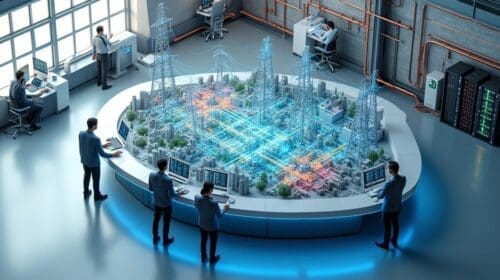Retrofitting coal plants to support hydrogen and geothermal is the apparent solution to the clean energy debacle. The mission has a dual purpose. It removes fossil fuel as a power source while keeping workers employed by giving them new work and skills in greener specialties. It is ideal, but the nuances of the endeavor illustrate deeper complexities in the energy industry.
The Enabling Technologies
Converting fossil fuel plants into clean energy will take more than designers and architects. The hundreds of abandoned coal plant shells have significant infrastructure that should not be wasted. Transmission lines and helpful resources abound, removing upfront costs for kick-starting businesses.
The plants need drilling and technological advancement to facilitate more advanced and scalable energy generation without compromising sustainability. Industry leaders at the PIVOT2022 conference introduced these discussions by explaining what technologies professionals are piloting to make the conversion into reality.
The priority is less intensive, more powerful drilling and bits for creating wells to harness power. Wells could remain within the square footage of the coal plant but dig deeper into the high-temperature rock. The better the drill bits are, the easier and cheaper it will be for one geothermal plant to service a larger area. For example, startups are creating wave-powered drill bits instead of focusing on sheer force. The energy source as a whole becomes less high maintenance.
Hydrogen requires more money and tech. Pure, green hydrogen is expensive to generate, despite it being the most prominent element on the planet. Research could make it viable and compatible with the current grid. Plants are piloting a coating that can heat up to generate hydrogen power and water as the only byproduct.
The Funding Legislation
Money is another essential catalyst in transforming coal plants. Laws like the Inflation Reduction Act make it financially beneficial for fossil fuel plants with existing electrical infrastructure to move toward cleaner power. There were over 170 active coal plants at the law’s inception. In July 2023, there are 158, and they’re transforming faster. Federal and state tax credits allow coal plants to adopt everything from hydrogen infrastructure to solar batteries for competitive pricing.
Changing these coal plants to geothermal and hydrogen is possible if the law has contingencies that help communities dependent on fossil fuels. People depend on these jobs, especially in rural regions of the world.
Legislation must provide financial assistance to keep households afloat and infrastructure growing during this transitional period. Otherwise, the change cannot occur because employees and employers would revolt against laws that sacrifice their livelihoods. However, geothermal plants have three variants to keep people receiving paychecks:
- Dry stream
- Flash steam
- Binary-cycle
Transforming coal plants means planning to replace these jobs past short-term construction projects while they transition. This is vital for machine operators digging and hauling the ground in coal plants to reach the resources needed.
The Diversification of Assets
Keeping people employed is critical during the liminal phases, meaning plants might need more than power generation. For example, they can connect to other energy hubs like data centers, employing people past the initial construction phase. It also expands the value of renewable energy plants as necessary for powering other utilities, like the Internet.
Nations must remove administrative hurdles alongside the financial ones to make these changeovers sustainable from multiple perspectives and grab citizen and local government buy-in. Facilitating hydrogen and geothermal requires more than transmission lines. Installing additional infrastructure calls for permits, and cutting the red tape on this is time-consuming. It takes longer than the planet can stand.
Working Around the Obstacles
A one-to-one transition from coal to renewable power is not possible. The electrical infrastructure stands, but it needs an update. Antiquated tech cannot meet power demands or manage energy like renewables require. It must be compatible with storage, engage with smart technologies to account for outages and peak times, and keep lights on during natural disasters by powering additional storage.
Oil and gas operations are commonly found in remote locations far from company headquarters. Now, it's possible to monitor pump operations, collate and analyze seismic data, and track employees around the world from almost anywhere. Whether employees are in the office or in the field, the internet and related applications enable a greater multidirectional flow of information – and control – than ever before.


![Why Enhanced Geothermal Energy Could Be Your Next Smart Investment [2025 Guide]](https://b1006343.smushcdn.com/1006343/wp-content/uploads/2025/06/Why-Enhanced-Geothermal-Energy-Could-Be-Your-Next-Smart-Investment-2025-Guide-500x280.jpg?lossy=2&strip=1&webp=1)





